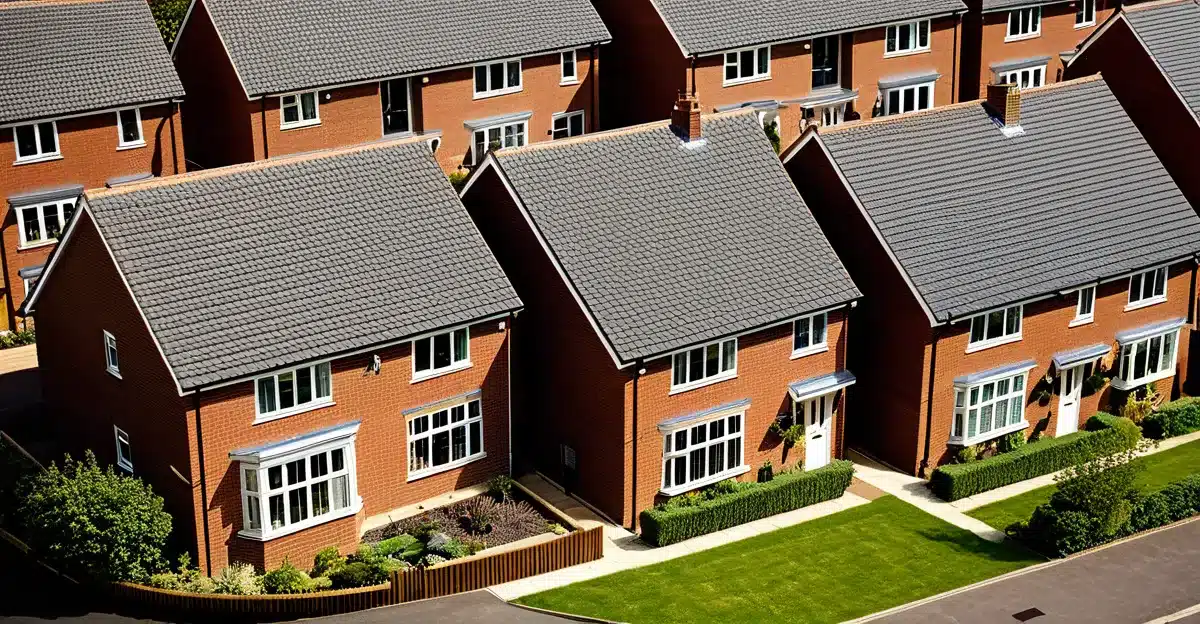Major Trends Influencing the UK Housing Market’s Future
Understanding the UK housing market trends is crucial to grasp the evolving landscape shaped by regional price shifts and demand fluctuations. Certain areas are experiencing rising house prices driven by limited supply and high demand, while others face stagnation due to economic or demographic changes. These market dynamics create a complex picture, affecting affordability and buyer interest.
Government policies significantly influence this future trajectory. Adjustments in stamp duty and planning reforms aim to balance market activity and housing supply. For example, easing planning restrictions could increase construction, potentially stabilizing prices over time. Conversely, tax changes can either encourage or deter buying, directly impacting demand patterns.
This might interest you : How Are Current Economic Trends Impacting the UK Property Market?
Mortgage rates play an equally pivotal role. Recent fluctuations have altered borrowing costs, affecting many buyers’ ability to finance purchases. The availability of diverse financing options further shapes access to the market, especially for first-time buyers. Tracking these financial factors offers insight into the future of UK housing, helping predict market movements and buyer behavior effectively.
Economic and Demographic Drivers of Change
Understanding the economic factors behind housing dynamics is crucial. Economic growth and employment levels directly affect individuals’ ability to purchase homes. When employment rises and wages increase, affordability improves; however, inflation can erode this benefit by pushing up construction costs and interest rates, making mortgages more expensive.
Also to see : Revolutionizing uk property deals: the impact of digital currencies
Parallel to the economy, demographic shifts play an essential role. The UK experiences steady population growth fueled by natural increase and migration, which intensifies demand for housing. Urbanisation trends concentrate demand in cities, further pressuring the housing market in already dense areas.
However, despite the rising demand, housing supply faces constraints. Land availability, planning regulations, and construction capacity restrict the number of new homes added annually. The UK government has set ambitious housing supply targets to address this gap aims to ease affordability pressures. Yet, meeting these targets requires overcoming structural challenges.
In sum, the interplay of economic growth, employment, demographic change, and housing supply constraints shapes the housing affordability landscape. Each factor influences the other, creating a complex environment that demands coordinated policy solutions.
Technology and Innovation in Housing
Technology is reshaping housing through proptech, transforming how properties are bought, sold, and managed. Digital platforms streamline transactions, enabling faster sales and transparent processes. This digital transformation in real estate enhances accessibility and simplifies property management, making it easier for both buyers and sellers.
Smart homes are becoming increasingly popular, integrating advanced automation systems that improve energy efficiency and convenience. Features like voice-controlled lighting, smart thermostats, and security systems not only enhance daily living but also help reduce energy consumption, appealing to eco-conscious residents.
Innovation extends to construction too. Modular and offsite building techniques reduce construction time and costs while maintaining quality. These methods allow for scalable, sustainable housing solutions that respond to growing demand without sacrificing craftsmanship.
Together, proptech, smart homes, and new construction methods bring a future-focused approach to housing, emphasizing efficiency, sustainability, and user experience. This synergy promises homes that are not just places to live but intelligent ecosystems adapting to modern lifestyles.
Sustainability and Environmental Considerations
Exploring the shift toward greener living spaces
The housing market is witnessing a growing emphasis on sustainable housing, driven by concerns about climate change and rising energy costs. Energy efficiency now plays a pivotal role in the design and construction of modern homes. Incorporating green initiatives such as solar panels, advanced insulation, and smart energy systems helps reduce carbon footprints while lowering utility bills.
Governments worldwide are offering incentives for retrofitting existing homes with eco-friendly upgrades or building new low-carbon structures. These programs aim to accelerate the adoption of materials and technologies that support reduced energy consumption and resource preservation. Meeting strict environmental standards through certifications boosts a property’s market value, making sustainable homes more attractive to buyers.
As environmental awareness grows, both buyers and developers recognize the long-term benefits of energy-efficient buildings. This trend not only contributes to global sustainability goals but also enhances comfort and savings for homeowners, reinforcing the business case for sustainable housing solutions.
Evolving Buyer and Renter Preferences
Understanding homebuyer trends today reveals a significant shift toward flexibility and lifestyle considerations, especially in the wake of the pandemic. Buyers and renters increasingly desire flexible spaces that can serve multiple functions—home offices, fitness areas, or remote learning rooms. Gardens and outdoor spaces rank high in priority as people seek personal retreats from urban density.
The rental market demand has surged alongside growth in the build-to-rent sector, which caters to renters’ needs with professionally managed properties designed for long-term living. Institutional investors are heavily backing this trend, recognizing its potential and stability. This shift highlights a preference for convenience, amenities, and community-focused living without ownership responsibilities.
Additionally, there is a notable migration from strictly urban cores toward suburban and even rural areas. This transition is driven by desires for larger living spaces and access to nature, without sacrificing connectivity. Real estate developers and investors now strategically adapt to these preferences, reshaping future housing supply to balance urban vibrancy and suburban tranquility.
Forecasts and Expert Analysis for the UK Housing Market
Housing market forecast models indicate moderate price growth over the next year, tempered by economic uncertainties. Industry insights reveal that supply constraints will remain a critical bottleneck, limiting availability despite increased demand. Experts agree that while some regions may see a slowdown, others could experience robust recovery driven by local factors.
One expert opinion highlights that rising interest rates could dampen buyer enthusiasm, posing risks for short-term growth. However, longer-term projections suggest a recovery as demand stabilizes and building activity picks up. Investors should watch for opportunity areas like emerging commuter towns offering better value.
Key challenges ahead include affordability issues for first-time buyers, rising construction costs, and regulatory changes affecting development. Industry professionals stress the importance of adaptive strategies to navigate these hurdles, such as focusing on energy-efficient homes to meet evolving market demand. The housing market forecast is nuanced, balancing risk and resilience, and requires a keen understanding of regional dynamics to leverage opportunities effectively.





